Experimental Investigation of the Mechanical and Durability Properties of Crumb Rubber Concrete
Abstract
:1. Introduction
2. Experimental Study
2.1. Materials
2.2. Mixture Proportion
2.3. Preparation of Specimens
2.4. Test Methods
3. Results and Discussion
3.1. Mechanical Properties
3.2. Durability
3.3. Effect of Modifiers
4. Conclusions
Acknowledgments
Author Contributions
Conflicts of Interest
References
- Su, H.; Yang, J.; Ling, T.C.; Ghataora, G.S.; Dirar, S. Properties of concrete prepared with waste tyre rubber particles of uniform and varying sizes. J. Clean. Prod. 2015, 91, 288–296. [Google Scholar] [CrossRef]
- Pacheco-Torgal, F.; Ding, Y.; Jalali, S. Properties and durability of concrete containing polymeric wastes (tyre rubber and polyethylene terephthalate bottles): An overview. Constr. Build. Mater. 2012, 30, 714–724. [Google Scholar] [CrossRef] [Green Version]
- Thomas, B.S.; Gupta, R.C.; Panicker, V.J. Recycling of waste tire rubber as aggregate in concrete: Durability-related performance. J. Clean. Prod. 2016, 112, 504–513. [Google Scholar] [CrossRef]
- Hernandez-Olivares, F.; Barluenga, G.; Bollati, M.; Witoszek, B. Static and dynamic behavior of recycled tyre rubber-filled concrete. Cem. Concr. 2002, 32, 1587–1596. [Google Scholar] [CrossRef]
- Yung, W.H.; Yung, L.C.; Hua, L.H. A study of the durability properties of waste tire rubber applied to self-compacting concrete. Constr. Build. Mater. 2013, 41, 665–672. [Google Scholar] [CrossRef]
- Thomas, B.S.; Gupta, R.C. Properties of high strength concrete containing scrap tire rubber. J. Clean. Prod. 2016, 113, 86–92. [Google Scholar] [CrossRef]
- Way, G.; Evans, R. Rubberised Bitumen in Road Construction; The Waste & Resources Action Programme: Banbury, UK, 2006. [Google Scholar]
- Mohammadi, I.; Khabbaz, H. Challenges associated with optimisation of blending, mixing and compaction temperature for asphalt mixture modified with crumb rubber modifier (CRM). Appl. Mech. Mater. 2012, 256–259, 1837–1844. [Google Scholar] [CrossRef]
- Flores-Medina, D.; Medina, N.F.; Hernández-Olivares, F. Static mechanical properties of waste rests of recycled rubber and high quality recycled rubber from crumbed tires used as aggregate in dry consistency concretes. Mater. Struct. 2014, 47, 185–1193. [Google Scholar] [CrossRef]
- Thomas, B.S.; Gupta, R.C. Long term behavior of cement concrete containing discarded tire rubber. J. Clean. Prod. 2015, 102, 78–87. [Google Scholar] [CrossRef]
- Ghaly, A.; Cahill, J. Correlation of strength, rubber content, and water to cement ratio in rubberized concrete. Can. J. Civil Eng. 2005, 32, 1075–1081. [Google Scholar] [CrossRef]
- Issa, C.A.; Salem, G. Utilization of recycled crumb rubber as fine aggregates in concrete mix design. Constr. Build. Mater. 2013, 42, 48–52. [Google Scholar] [CrossRef]
- Emira, N.; Bajaba, N. The effect of rubber crumbs addition on some mechanical properties of concrete composites. Int. J. Mech. Syst. Eng. 2012, 2, 53–58. [Google Scholar]
- Mohammadi, I.; Khabbaz, H.; Vessalas, K. In-depth assessment of Crumb Rubber Concrete (CRC) prepared by water-soaking treatment method for rigid pavements. Constr. Build. Mater. 2014, 71, 456–471. [Google Scholar] [CrossRef]
- Corinaldesi, V.; Mazzoli, A.; Moriconi, G. Mechanical behavior and thermal conductivity of mortars containing waste rubber particles. Mater. Des. 2011, 32, 1646–1650. [Google Scholar] [CrossRef]
- Nguyen, T.H.; Toumi, A.; Turatsinze, A. Mechanical properties of steel fiber reinforced and rubberized cement-based mortars. Mater. Des. 2010, 31, 641–647. [Google Scholar] [CrossRef]
- Holmes, N.; Browne, A.; Montague, C. Acoustic properties of concrete panels with crumb rubber as a fine aggregate replacement. Constr. Build. Mater. 2014, 73, 195–204. [Google Scholar] [CrossRef]
- Khaloo, A.R.; Dehestani, M.; Rahmatabadi, P. Mechanical properties of concrete containing a high volume of tire–rubber particles. Waste Manag. 2008, 28, 2472–2482. [Google Scholar] [CrossRef] [PubMed]
- Ling, T.C.; Nor, H.M.; Hainin, M.R.; Chik, A.A. Laboratory performance of crumb rubber concrete block pavement. Int. J. Pavement Eng. 2009, 10, 361–374. [Google Scholar] [CrossRef]
- Zheng, L.; Huo, X.S.; Yuan, Y. Strength, modulus of elasticity, and brittleness index of rubberized concrete. J. Mater. Civ. Eng. 2008, 20, 692–699. [Google Scholar] [CrossRef]
- Sukontasukkul, P.; Tiamlom, K. Expansion under water and drying shrinkage of rubberized concrete mixed with crumb rubber with different size. Constr. Build. Mater. 2012, 29, 520–526. [Google Scholar] [CrossRef]
- Batayneh, M.; Marie, I.; Asi, I. Promoting the use of crumb rubber concrete in developing countries. J. Waste Manag. 2008, 28, 2171–2176. [Google Scholar] [CrossRef]
- Benazzouk, A.; Douzane, O.; Langlet, T.; Mezreb, K.; Roucoult, J.M.; Quéneudec, M. Physico-mechanical properties and water absorption of cement composite containing shredded rubber wastes. Cem. Concr. Compos. 2007, 29, 732–740. [Google Scholar] [CrossRef]
- Raghavan, D.; Huynh, H.; Ferraris, C. Workability, mechanical properties, and chemical stability of a recycled tyre rubber filled cementitious composite. J. Mater. Sci. 1998, 33, 1745–1752. [Google Scholar] [CrossRef]
- Segre, N.; Joekes, I. Use of tire rubber particles as addition to cement paste. Cem. Concr. Res. 2000, 30, 1421–1425. [Google Scholar] [CrossRef]
- Oiknomou, N.; Stefanidou, M.; Mavridou, S. Improvement of the bonding between rubber tire particles and cement paste in cement products. In Proceedings of the 15th Conference of the Technical Chamber of Greece, Alexandroupoli, Greece, 25–27 October 2006; pp. 234–242.
- National Standard of the People’s Republic of China. Common Portland Cement (GB175-2007); General Administration of Quality Supervision, Inspection and Quarantine of the People's Republic of China (AQSIQ): Beijing, China, 2008. [Google Scholar]
- Gesoğlu, M.; Güneyisi, E.; Khoshnaw, G.; İpek, S. Abrasion and freezing–thawing resistance of pervious concretes containing waste rubbers. Constr. Build. Mater. 2014, 73, 19–24. [Google Scholar] [CrossRef]
- Khorrami, M.; Vafai, A.; Khalilitabas, A.; Desai, C.S.; Ardakani, M. Experimental investigation on mechanical characteristics and environmental effects on rubber concrete. Int. J. Concr. Struct. Mater. 2010, 4, 17–23. [Google Scholar] [CrossRef]
- Siddique, R.; Naik, T.R. Properties of concrete containing scrap-tire rubber–an overview. Waste Manag. 2004, 24, 563–569. [Google Scholar] [CrossRef] [PubMed]
- National Standard of the People’s Republic of China. Test Methods for Cement and Concrete for Highway Engineering (JTG E30-2005); Ministry of Transport of the People's Republic of China: Beijing, China, 2006. [Google Scholar]
- National Standard of the People’s Republic of China. Standard for test Method of Mechanical Properties on Ordinary Concrete (GB/T 50081-2002); Ministry of Construction of the People’s Republic of China: Beijing, China, 2003. [Google Scholar]
- National Standard of the People’s Republic of China. Standard for Test Methods of Long-Term Performance and Durability of Ordinary Concrete (GB/T 50082-2009); Ministry of Housing and Urban-Rural Development of the People's Republic of China (MOHURD): Beijing, China, 2010. [Google Scholar]
- Gupta, T.; Chaudhary, S.; Sharma, R.K. Assessment of mechanical and durability properties of concrete containing waste rubber tire as fine aggregate. Constr. Build. Mater. 2014, 73, 562–574. [Google Scholar] [CrossRef]
- John, T.; Vernon, R. Mixture proportioning considerations for improved freeze–thaw durability of pervious concrete. Plan. Sustain. Cold Reg. Proc. 2013. [Google Scholar] [CrossRef]
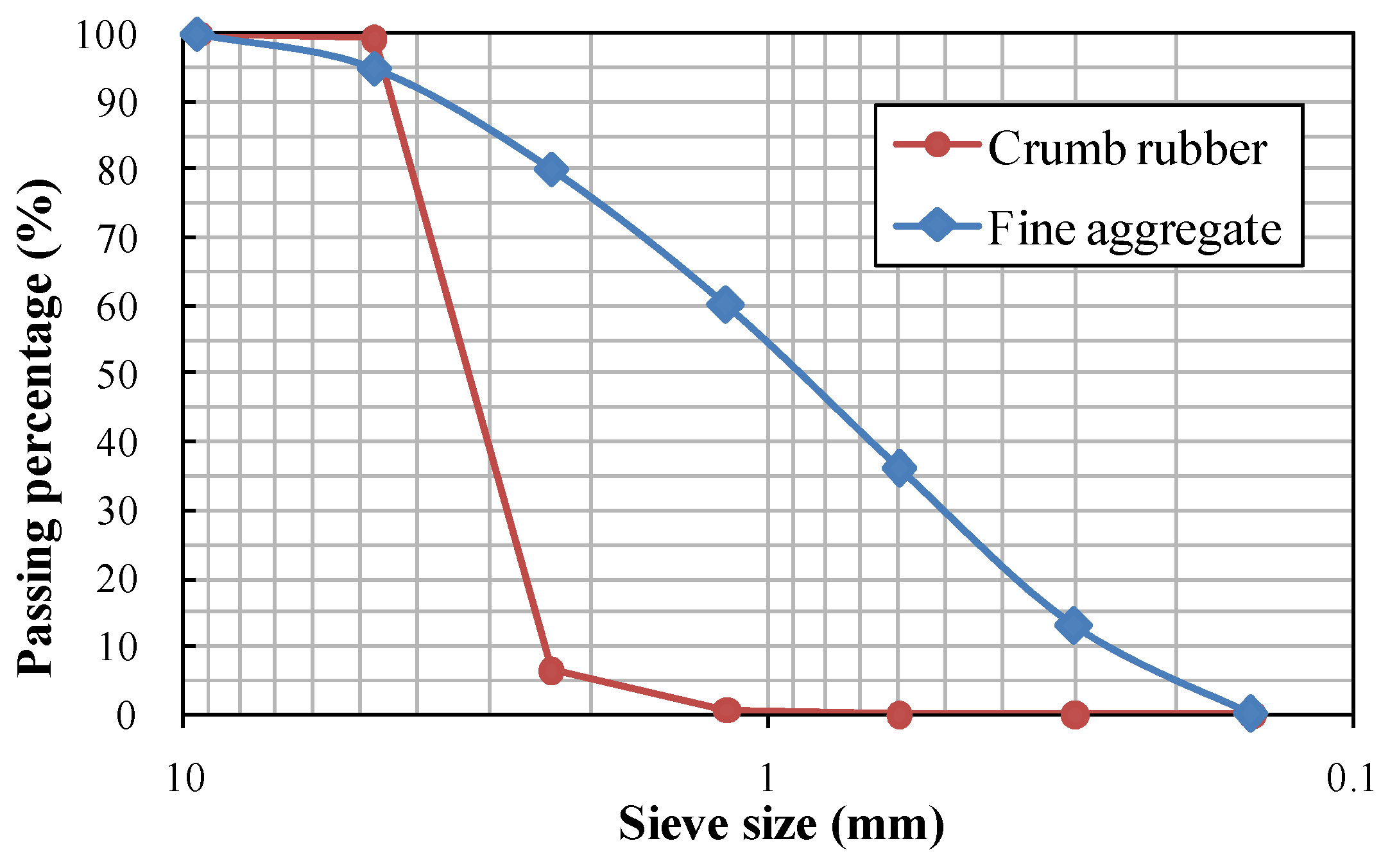
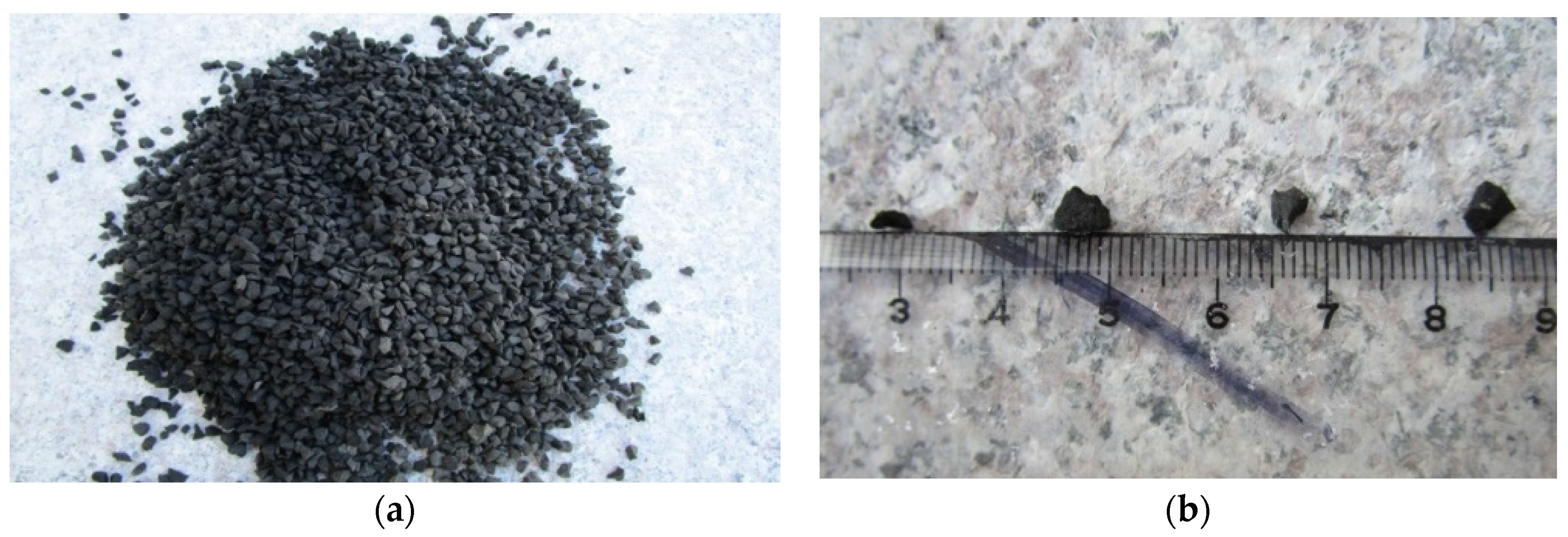
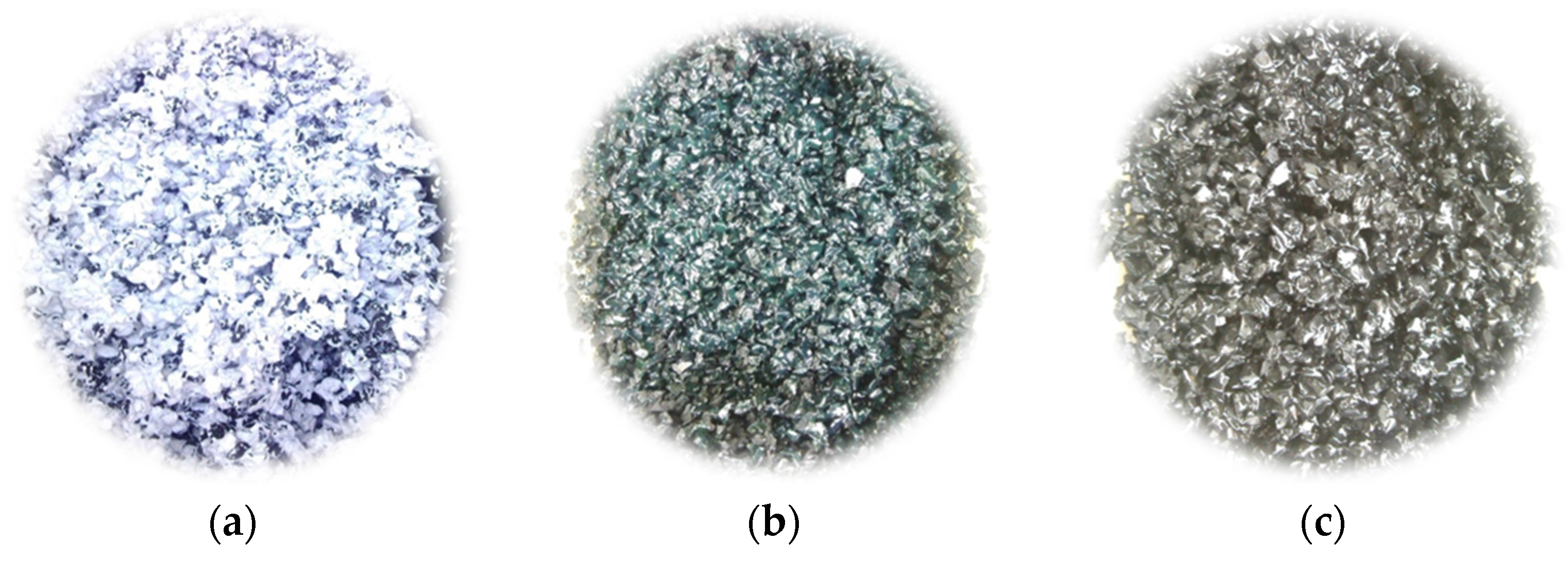
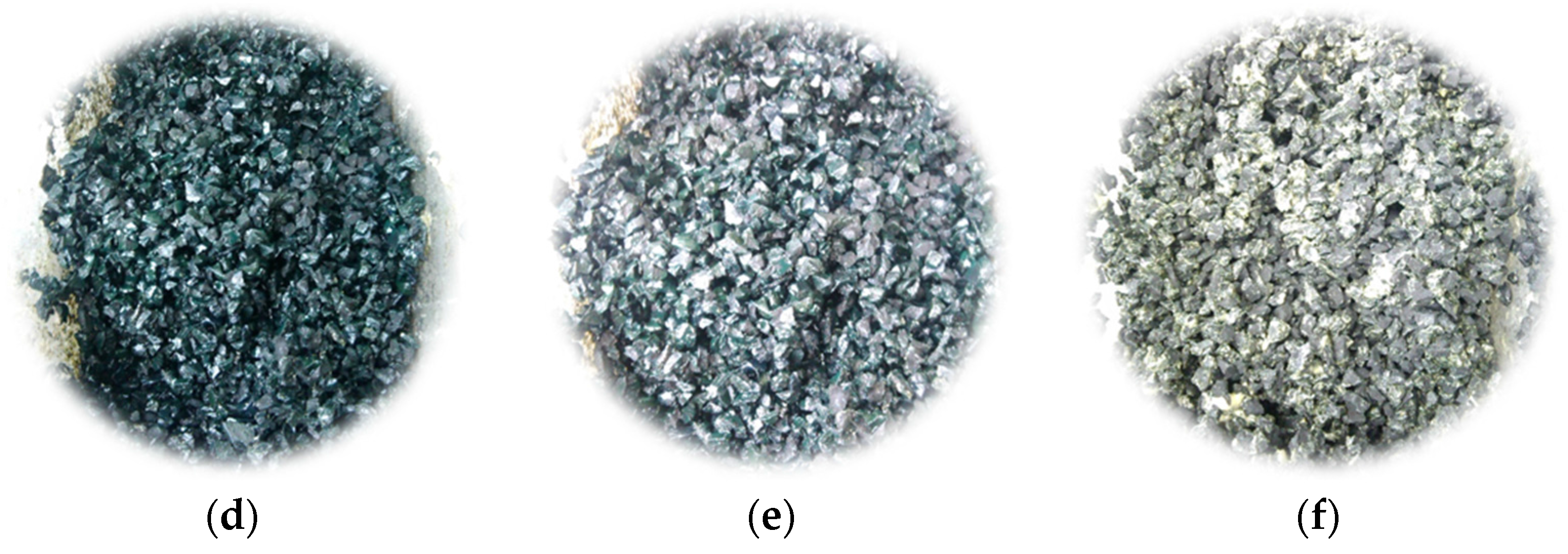
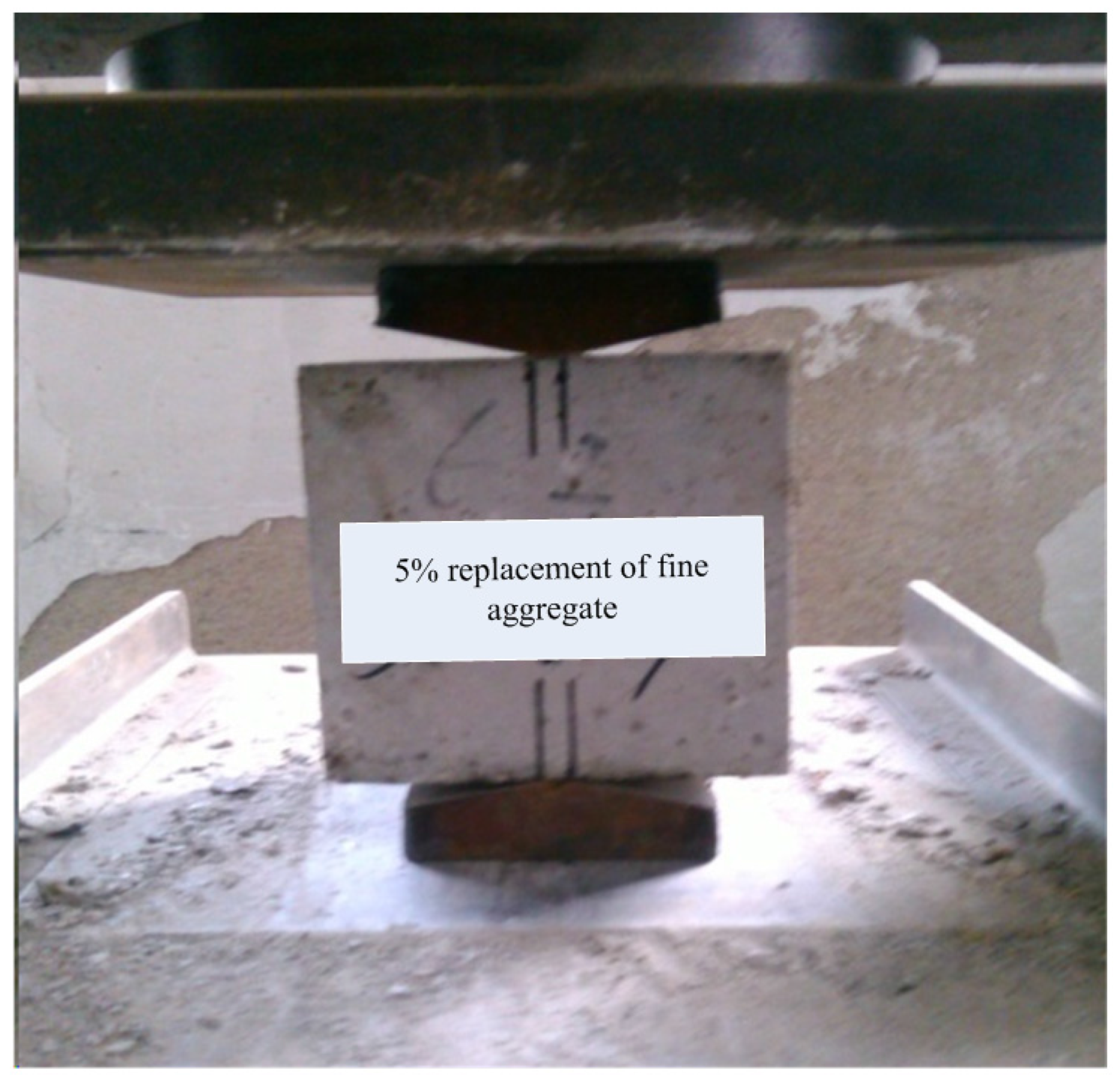
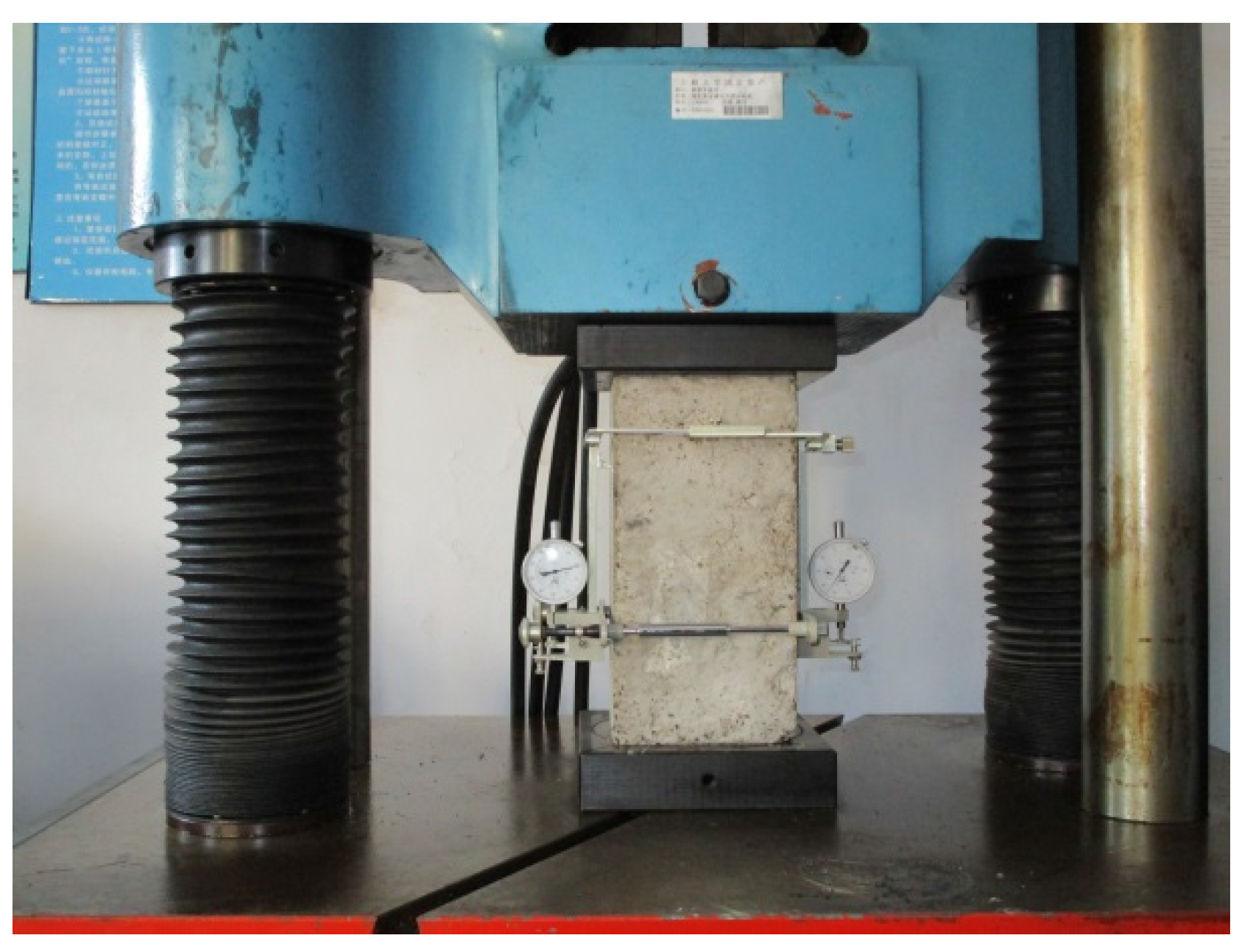
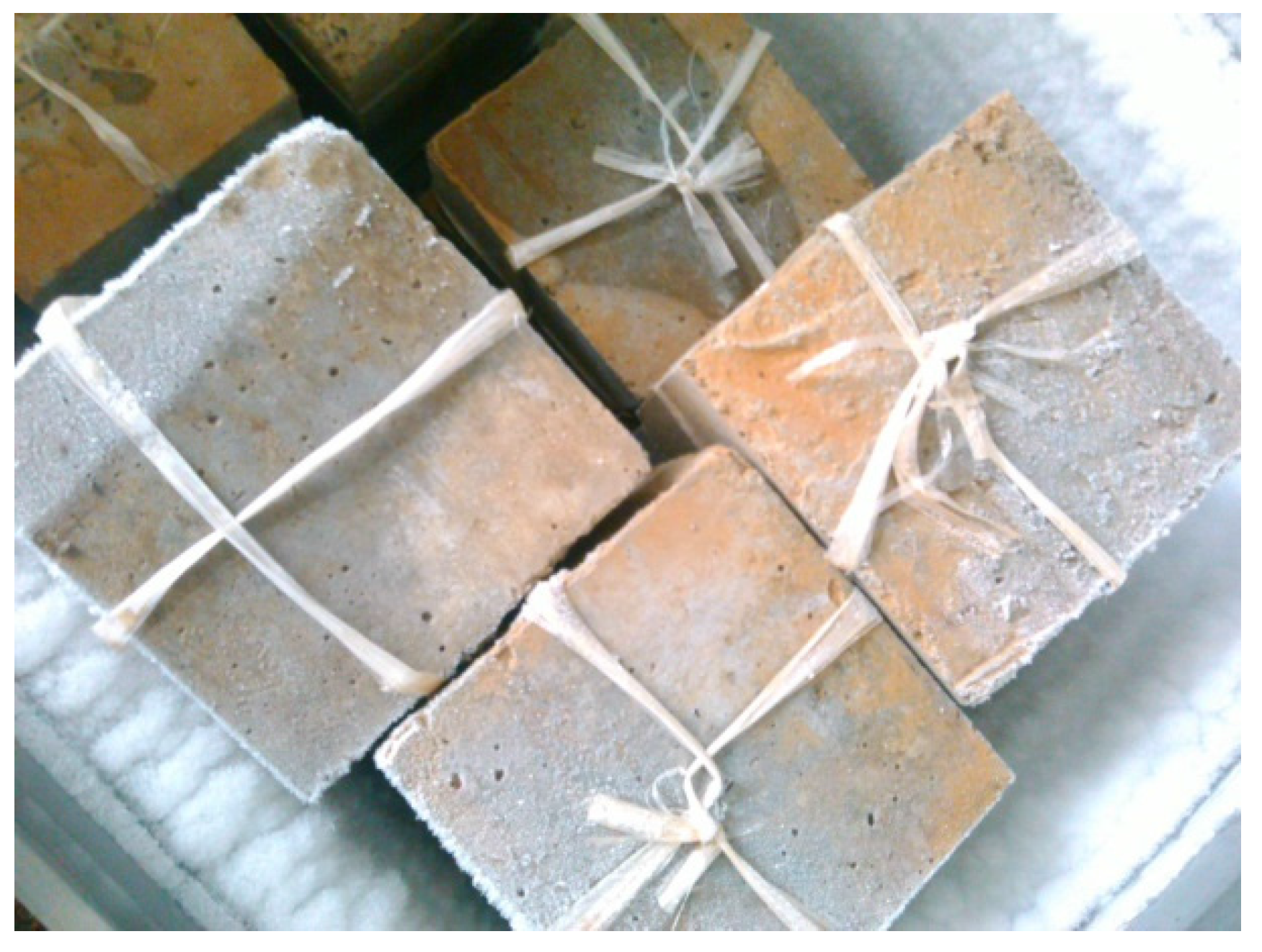
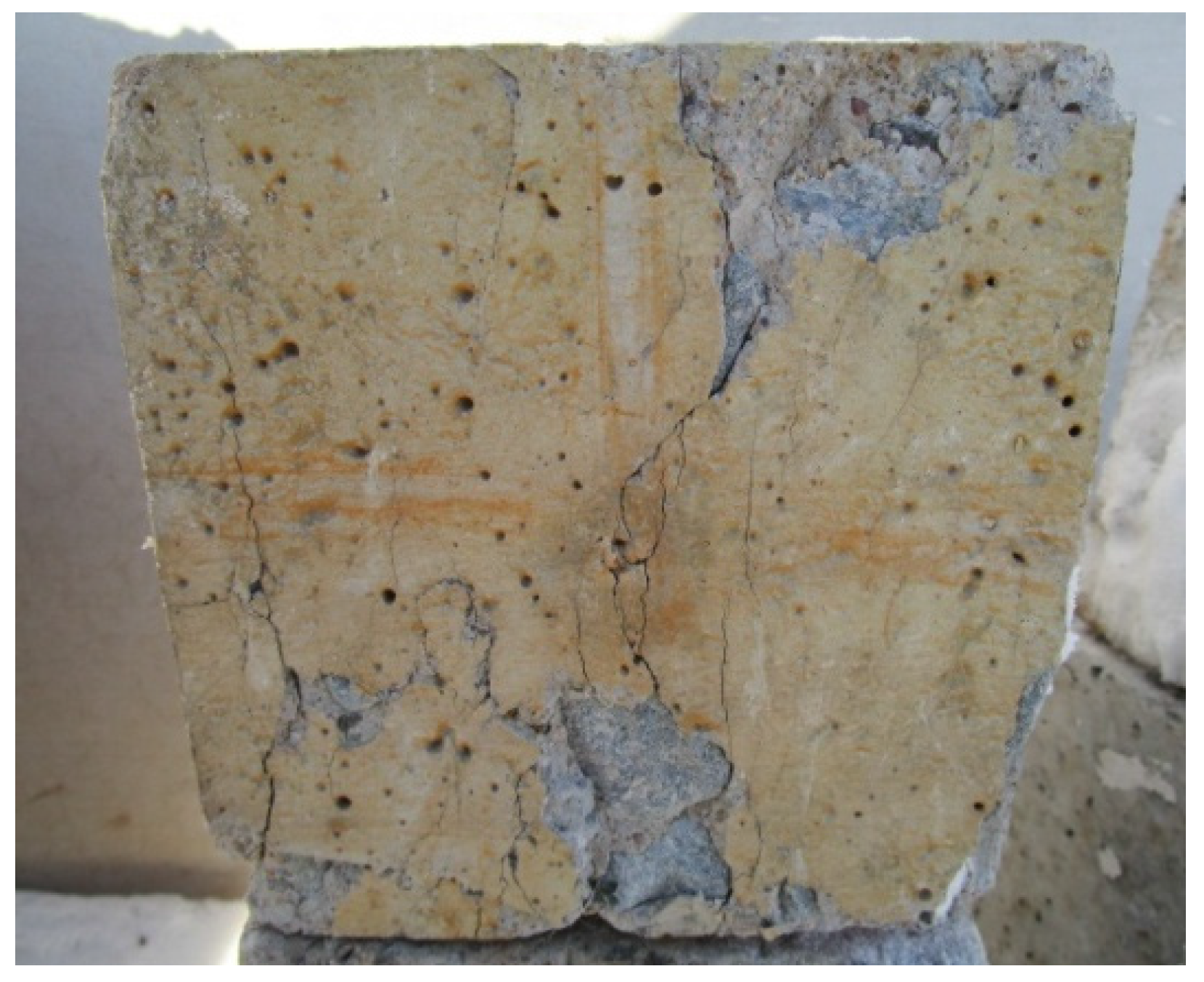
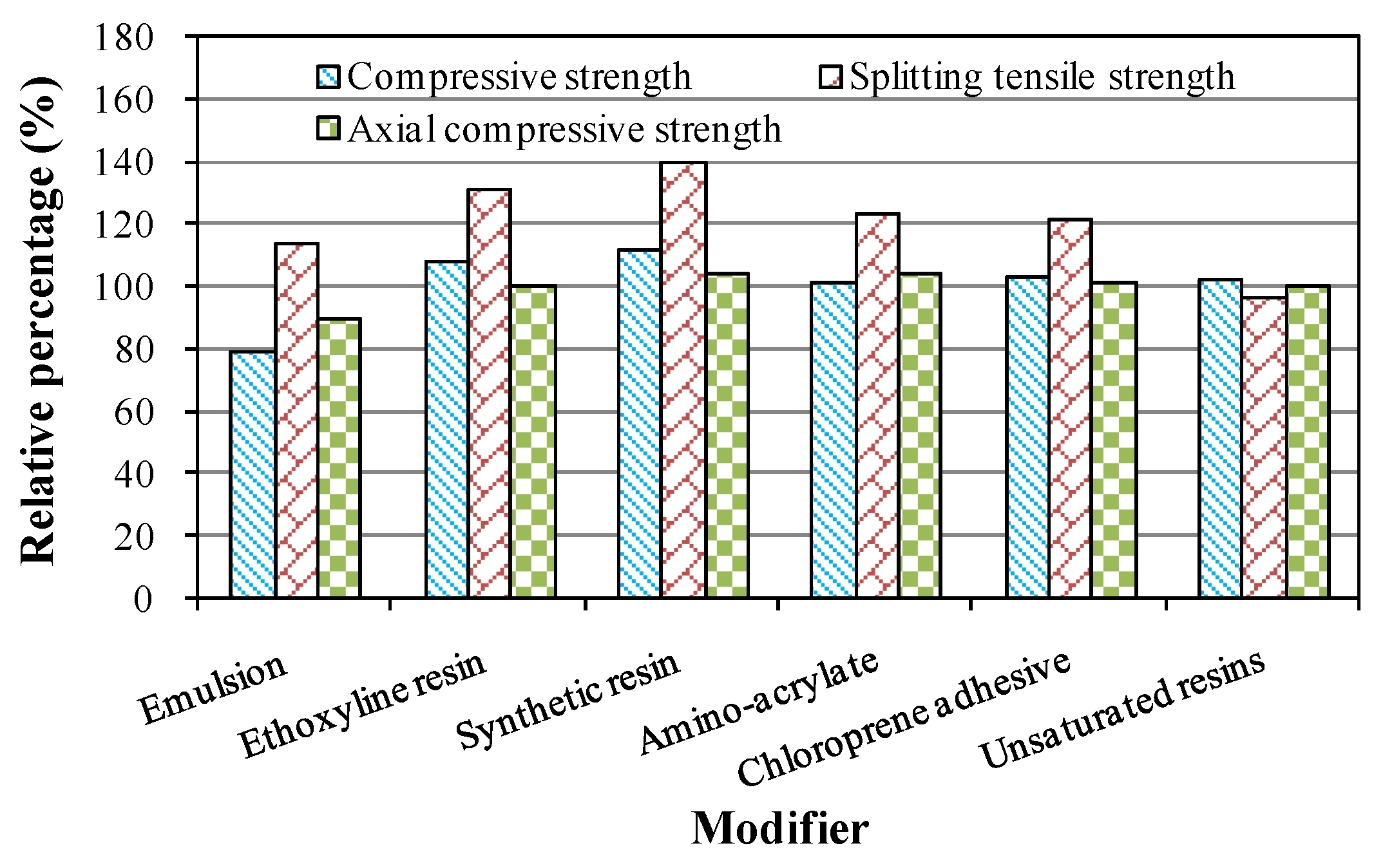
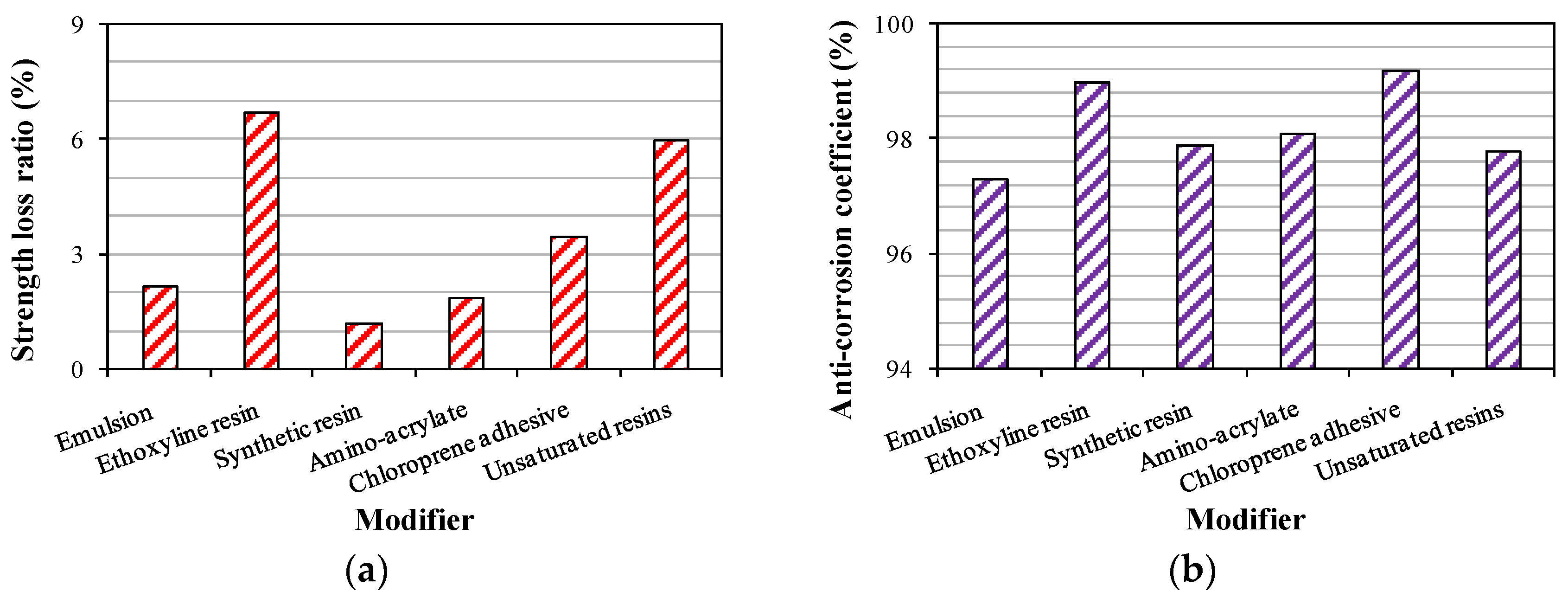
| Mix | Rubber Content (%) | Weight per Cubic Meter (kg/m3) | ||||
|---|---|---|---|---|---|---|
| Water | Cement | Fine Aggregate | Coarse Aggregate | Crumb Rubber | ||
| RC | 0 | 180 | 430 | 593 | 1197 | 0 |
| Fine aggregate is replaced by crumb rubber | ||||||
| CF1 | 5 | 180 | 430 | 563.4 | 1197 | 13.4 |
| CF2 | 10 | 180 | 430 | 533.7 | 1197 | 26.8 |
| CF3 | 15 | 180 | 430 | 504.1 | 1197 | 40.2 |
| CF4 | 20 | 180 | 430 | 474.4 | 1197 | 56.3 |
| Mixture is replaced by crumb rubber | ||||||
| CM1 | 1 | 178.2 | 425.7 | 587.1 | 1185.0 | 12 |
| CM2 | 3 | 174.6 | 417.1 | 575.2 | 1161.1 | 36 |
| CM3 | 5 | 171.0 | 408.5 | 563.4 | 1137.2 | 60 |
| CM4 | 10 | 162.0 | 387.0 | 533.7 | 1077.3 | 120 |
| Mixture | RC | CF | CM | ||||||
|---|---|---|---|---|---|---|---|---|---|
| Rubber content (%) | 0 | 5 | 10 | 15 | 20 | 1 | 3 | 5 | 10 |
| Compressive strength (MPa) | 34.76 | 34.52 | 34.19 | 33.82 | 33.41 | 31.60 | 29.99 | 25.38 | 19.33 |
| Splitting tensile strength (MPa) | 2.35 | 2.33 | 2.32 | 2.31 | 2.29 | 2.15 | 2.14 | 1.86 | 1.46 |
| Axial compressive strength (MPa) | 23.73 | 23.41 | 22.70 | 22.34 | 21.29 | 22.55 | 21.20 | 19.96 | 15.47 |
| Modulus of elasticity (GPa) | 31.75 | 29.60 | 27.88 | 26.71 | 24.73 | 29.22 | 21.88 | 17.74 | 13.42 |
| Mixture | RC | CF | CM | ||||||
|---|---|---|---|---|---|---|---|---|---|
| Rubber content (%) | 0 | 5 | 10 | 15 | 20 | 1 | 3 | 5 | 10 |
| Strength loss ratio (%) | 5.8 | 4.8 | 3.2 | 3.1 | 2.7 | 5.1 | 4.2 | 2.1 | 2.0 |
| Anti-corrosion coefficient (%) | 96.1 | 96.7 | 97.4 | 97.7 | 98.4 | 96.2 | 96.9 | 97.0 | 97.2 |
| Modifiers | Mechanical Properties | ||
|---|---|---|---|
| Compressive Strength MPa (%) | Splitting Tensile Strength MPa (%) | Axial Compressive Strength MPa (%) | |
| None | 25.38 (100) | 1.86 (100) | 19.96 (100) |
| Emulsion | 20.15 (79) | 2.12 (114) | 17.93 (90) |
| Ethoxyline resin | 27.44 (108) | 2.44 (131) | 20.03 (100) |
| Synthetic resin | 28.40 (112) | 2.61 (140) | 20.96 (105) |
| Amino-acrylate | 25.90 (102) | 2.30 (124) | 20.80 (104) |
| Chloroprene adhesive | 26.24 (103) | 2.26 (122) | 20.40 (102) |
| Unsaturated resins | 26.12 (103) | 1.80 (97) | 20.07 (101) |
| Modifiers | Strength Loss Ratio (%) | Anti-Corrosion Coefficien (%) |
|---|---|---|
| Emulsion | 2.2 | 97.3 |
| Ethoxyline resin | 6.7 | 99.0 |
| Synthetic resin | 1.2 | 97.9 |
| Amino-acrylate | 1.9 | 98.1 |
| Chloroprene adhesive | 3.5 | 99.2 |
| Unsaturated resins | 6.0 | 97.8 |
© 2016 by the authors; licensee MDPI, Basel, Switzerland. This article is an open access article distributed under the terms and conditions of the Creative Commons by Attribution (CC-BY) license (http://creativecommons.org/licenses/by/4.0/).
Share and Cite
Liu, H.; Wang, X.; Jiao, Y.; Sha, T. Experimental Investigation of the Mechanical and Durability Properties of Crumb Rubber Concrete. Materials 2016, 9, 172. https://doi.org/10.3390/ma9030172
Liu H, Wang X, Jiao Y, Sha T. Experimental Investigation of the Mechanical and Durability Properties of Crumb Rubber Concrete. Materials. 2016; 9(3):172. https://doi.org/10.3390/ma9030172
Chicago/Turabian StyleLiu, Hanbing, Xianqiang Wang, Yubo Jiao, and Tao Sha. 2016. "Experimental Investigation of the Mechanical and Durability Properties of Crumb Rubber Concrete" Materials 9, no. 3: 172. https://doi.org/10.3390/ma9030172






